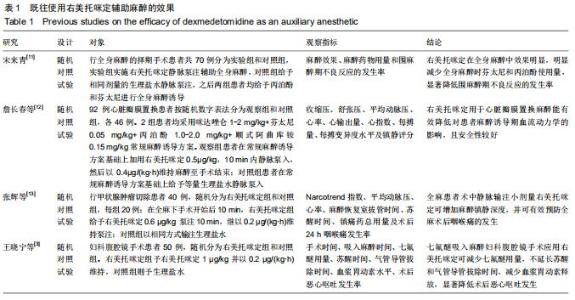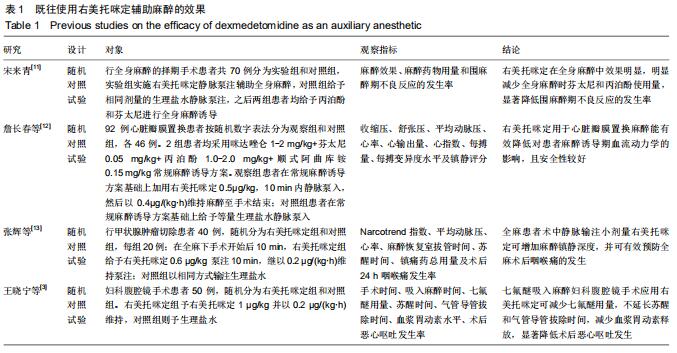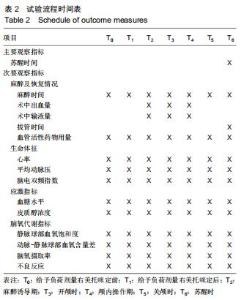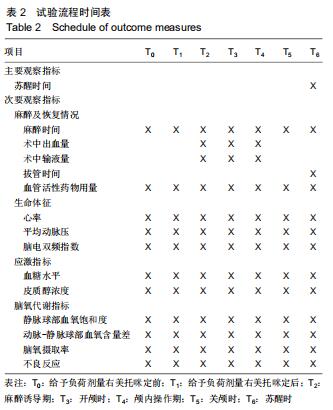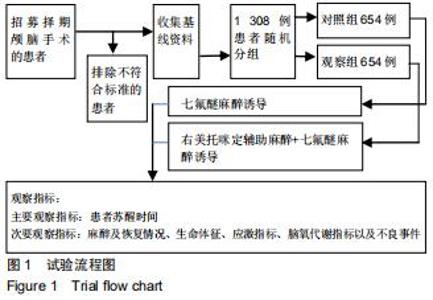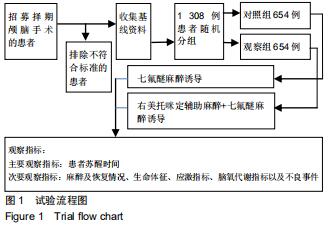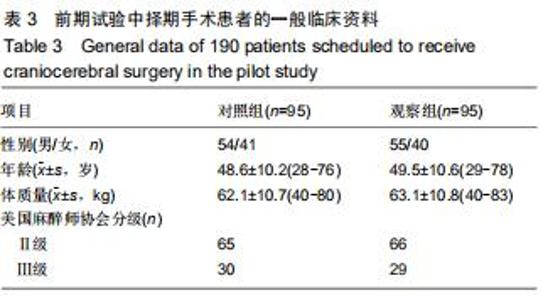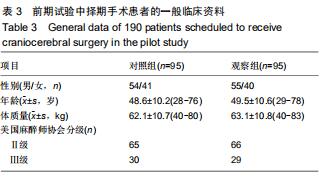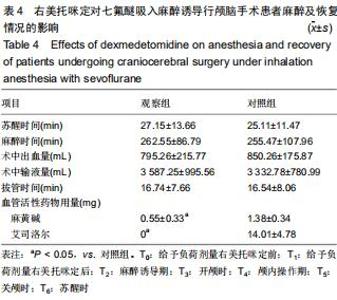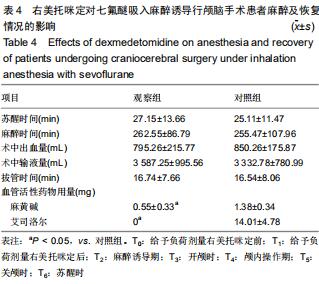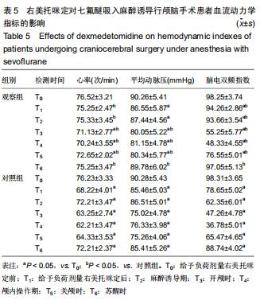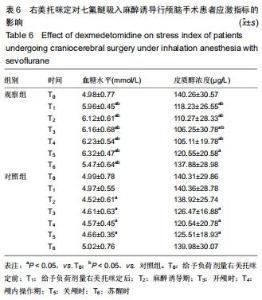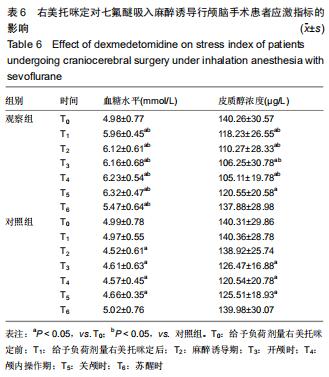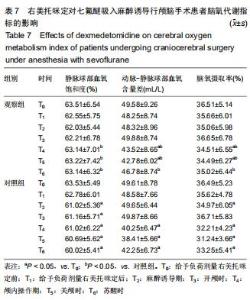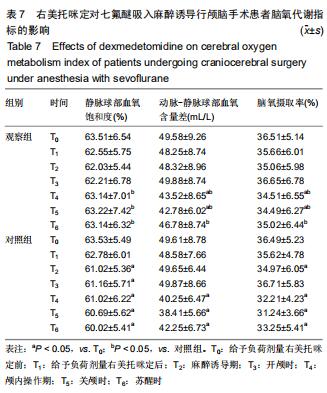|
[1] MCCLAIN CD, SORIANO SG. Anesthesia for intracranial surgery in infants and children. Curr Opin Anaesthesiol. 2014;27(5):465-469.
[2] WANG A, ABRAMOWICZ AE. Role of anesthesia in endovascular stroke therapy. Curr Opin Anaesthesiol. 2017;30(5):563-569.
[3] 王晓宁,刘丽,张丽红,等.右美托咪定对七氟醚吸入麻醉妇科腹腔镜手术患者血浆胃动素及术后恶心呕吐的影响[J].医学研究杂志,2014,43(5): 168-170.
[4] GOKCEK E, KAYDU A, AKDEMIR MS, et al. Early postoperative recovery after intracranial surgical procedures. Comparison of the effects of sevoflurane and desflurane. Acta Cir Bras. 2016;31(9): 638-644.
[5] KONDO Y, HIROSE N, MAEDA T, et al. Changes in Cerebral Blood Flow and Oxygenation During Induction of General Anesthesia with Sevoflurane Versus Propofol. Adv Exp Med Biol. 2016;876:479-484.
[6] 吴寿和,张国强,翁灿辉.七氟醚吸入麻醉对急性颅内出血开颅手术患者的脑保护作用[J].实用医学杂志,2017,33(2):276-278.
[7] DIETRICH W, ERBGUTH F. Increased intracranial pressure and brain edema. Medizinische Klinik, Intensivmedizin und Notfallmedizin. 2013;108(2):157-169; quiz 170-171.
[8] 赵泽宇,刘建波,张蓉,等.右美托咪定对脑瘫患儿七氟醚麻醉苏醒期躁动的影响[J].中华麻醉学杂志,2013,33(6):676-679.
[9] ZHANG X, LIU S, NEWPORT GD, et al. In Vivo Monitoring of Sevoflurane-induced Adverse Effects in Neonatal Nonhuman Primates Using Small-animal Positron Emission Tomography. Anesthesiology. 2016;125(1):133-146.
[10] 李进,祝德刚,丰新民,等.七氟醚控制性降压用于颅脑手术对围术期患者血流动力学和脑氧代谢的影响[J].临床麻醉学杂志,2014,30(7):672-675.
[11] 宋来青.右美托咪定辅助全身麻醉的效果分析[J].贵阳医学院学报,2015, 40(9):997-999,1002.
[12] 詹长春,黄焕森.右美托咪定对心脏瓣膜置换术患者麻醉中血流动力学的影响[J].中国药房,2015,26(35):4992-4994.
[13] 张辉,邵东华,吴进,等.右美托咪定对全麻麻醉深度和术后咽喉痛的影响[J].江苏大学学报(医学版),2015,25(5):412-415.
[14] FITZ-HENRY J. The ASA classification and peri-operative risk. Ann R Coll Surg Engl. 2011;93(3):185-187.
[15] YANG F, LIU XJ. Effects of dexmedetomidine on hemodynamics and sedation depth of sevoflurane induced tracheal intubation. Hebei Yiyao. 2017;39(18):2747-2751.
[16] JIANG B, SONG TY, ZHAO XB, et al. Effects of dexmedetomidine combined with sevoflurane anesthesia on cerebral oxygen metabolism in children undergoing neurosurgery. Hebei Yike Daxue Xuebao. 2016; 37(10):1222-1226.
[17] WANG DD, WU N, ZHANG FC. Application of dexmedetomidine in pediatric short-term operation under sevoflurane inhalation-induced anesthesia. Yixue Linchuang Yanjiu. 2017;34(6):1774-1775.
[18] TAKAHASHI Y, UENO K, NINOMIYA Y, et al. Potential risk factors for dexmedetomidine withdrawal seizures in infants after surgery for congenital heart disease. Brain Dev. 2016;38(7):648-653.
[19] 李新春,戚岩,赵建辉,等.不同剂量右美托咪啶对颅脑损伤患者围术期脑氧代谢的影响[J].河北医药,2013,35(3):356-357.
[20] HWANG L, CHOI IY, KIM SE, et al. Dexmedetomidine ameliorates intracerebral hemorrhage-induced memory impairment by inhibiting apoptosis and enhancing brain-derived neurotrophic factor expression in the rat hippocampus. Int J Mol Med. 2013;31(5):1047-1056.
[21] 靳广丽,李晓芳,张红伟,等.右美托咪啶预处理对开颅手术患者血清S100β蛋白表达的影响[J].新乡医学院学报, 2017,34(5):390-393.
[22] LEHTO J, SCHEININ A, JOHANSSON J, et al. Detecting a dexmedetomidine-evoked reduction of noradrenaline release in the human brain with the alpha2C-adrenoceptor PET ligand [11C] ORM-13070. Synapse. 2016;70(2):57-65.
[23] 袁军,李继勇,吴昱,等.右美托咪啶注射液对脑外介入治疗患者脑代谢影响及脑损伤的保护作用[J].中国临床药理学杂志,2016,32(20):1834-1837..
|
